We’re on a mission to demystify the recycling process. It’s more than just tossing items into a yellow bin; it’s a complex journey that breathes new life into plastic waste and shapes a sustainable future for us all.
Our commitment to delivering excellence extends to every stage of our recycling process. From the initial collection of plastic materials to the final packaging of our pellets, we prioritize quality, efficiency and sustainability.

Discover every stage of our plastics recycling process, from collection to pellet packaging, and witness how we turn discarded plastics into valuable resources.
1
Feeding
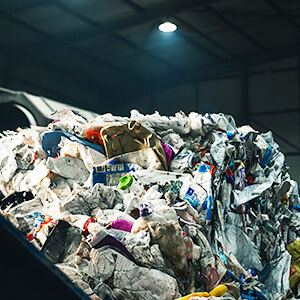
The process begins by collecting plastic materials from various sources. It’s a pivotal step that not only prevents these items from ending up in landfills but also reduces the burden on our environment.
We understand the critical role that proper baling plays in the granulation process. That’s why we employ a meticulous #Feeding strategy, ensuring that once collected, the bales are carefully selected based on the type of granulate we aim to produce.
Upon arrival at our facility, each bale is thoroughly assessed by our experienced team. We inspect the composition of the plastics within the bale, identifying the types of polymers present and assessing their condition.
We sort the bales according to the specific types of plastics they contain. Whether it’s PP, HDPE, LDPE, or other polymers, our sorting process ensures that each bale is categorized accurately.
Once sorted, we align each bale with the granulate specifications required for our clients’ needs. Whether it’s for injection molding, extrusion or other manufacturing processes.
By selecting bales based on granulate type, we optimize the efficiency of our recycling process.
This targeted approach minimizes waste and maximizes the yield of high-quality granulate, reducing both costs and environmental impact.
2
Sorting
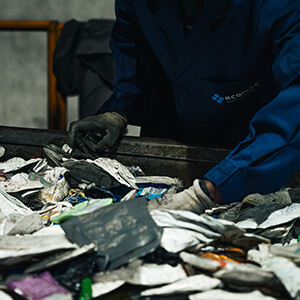
After the initial preparation of the bales, the material undergoes a precise cut using a guillotine, followed by passage through a ballistic separator (solid separator) to eliminate any remaining rigid waste.
Our dedicated team then takes over, sorting through the plastics by hand. This hands-on approach is crucial to guaranteeing the highest quality of materials, as it ensures that different types of plastic within the bale are effectively separated.
By meticulously sorting the plastics at this stage, we lay the foundation for the next phase of the recycling process, ensuring that each material is primed and ready for transformation into new, high-quality products.
3
Shredding
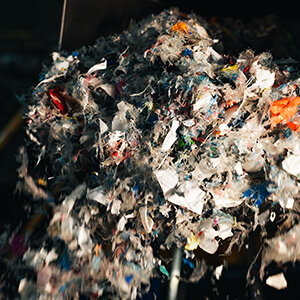
As the plastic is fed into the shredders, it undergoes transformation into smaller particles, essential for waste management.
By reducing the size of the plastic, shredders facilitate the recovery of waste material. This step is pivotal as it breaks down the plastic into tiny pieces, enabling it to be processed in subsequent stages for reuse.
4
Washing
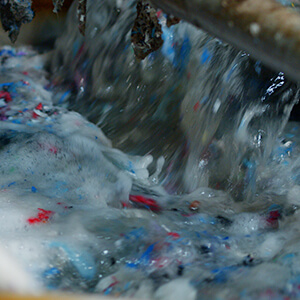
The shredded pieces undergo a washing process (friction washer and the wash tank) to effectively eliminate any contaminants.
This thorough cleaning procedure is essential for enhancing the quality of the recycled material, thereby ensuring superior results. High-quality pellets can only be achieved through effective washing and our stringent protocols ensure that our final product meets rigorous quality standards.
The water used in this process is treated in our WWTP and re-enters the circuit, allowing significant resource savings. This eco-friendly approach aligns with our overarching goal of reducing our carbon footprint and promoting sustainable practices.
5
Drying
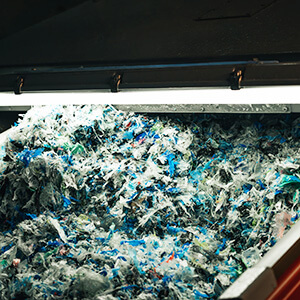
After the washing process, the washed plastic flakes are dewatered. Our mechanical drying process is innovative, cost efficient and robust. This dewatering process typically entails removing excess moisture from the plastic flakes. Just like wringing out a wet towel, in our dryer, the material is squeezed with the roller press preparing them for further processing.
6
Filtering
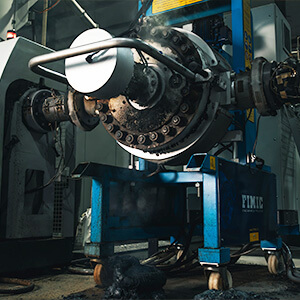
During extrusion, recycled plastics are melted and forced through a die to create a continuous profile or shape. Filtering is integrated into this process to ensure that any remaining impurities or contaminants are removed from the melted plastic.
The filtering stage involves the use of a specialized filter constructed using laser technology. This advanced filter is designed to effectively trap and remove even the smallest impurities from the melted plastic. As the plastic passes through the filter any remaining contaminants are captured, leaving behind a purified material ready for further processing.
The filtered plastic material exits the extrusion process in the form of purges. These purges consist of the removed impurities and are separated from the purified plastic. While the purges may not be suitable for use in all applications, they still have various potential uses. For example, they can be recycled or repurposed for applications such as urban furniture, vineyard stakes, or other similar uses where the purity requirements are not as stringent.
Overall, the filtering process, aided by laser-constructed filters, plays a vital role in ensuring the quality and purity of the recycled plastic material produced during the extrusion process, while also offering opportunities for additional applications of the purged impurities.
7
Granulation
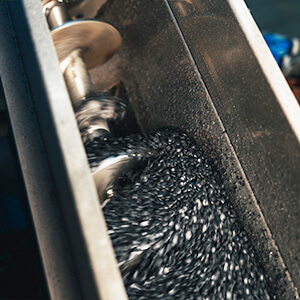
After the extrusion and filtering stages in plastics recycling, the granulation process takes center stage, representing a pivotal moment in the recycling journey. This process involves the transformation of cleaned plastic materials into pellets, which serve as the raw material for the creation of new, usable products.
The prepared plastic materials are fed into a granulation machine, which consists of rotating blades or knives. These blades cut the plastic into small, uniform pieces or pellets. The machine operates with precision to ensure consistent pellet size and shape.
As the plastic materials are granulated into pellets, they undergo a process of cooling and solidification with water. This helps to solidify the molten plastic and prevent deformation or sticking. The cooled pellets are subsequently gathered into large bags to undergo the homogenization process.
8
Quality Lab
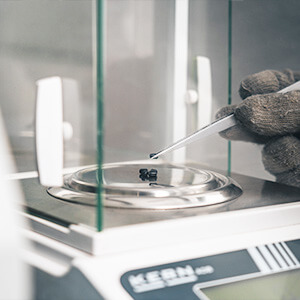
Our lab is the beating heart of our commitment to delivering excellence in recycled plastics.
Equipped with state-of-the-art technology and manned by a team of highly skilled technicians, our Quality Lab is dedicated to ensuring that every batch of recycled plastics meets the standards of quality and purity we are working for.
Samples from each batch of recycled plastics undergo comprehensive testing, covering a range of criteria including purity, consistency and mechanical properties.
But our commitment to quality doesn’t end there. Continuous improvement is ingrained in our culture, and our lab serves as a hub for refinement. We constantly explore new techniques and technologies to enhance our processes.
9
Packaging
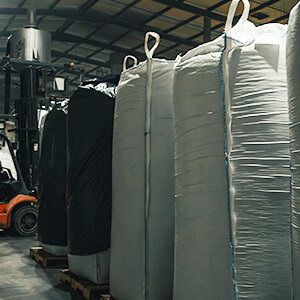
As we prepare our products to deliver, we ensure that every detail is taken care of to meet our customers requirements and exceed their expectations.
Proper labeling and serial number indication are paramount in our packaging process. Each package is labeled with clear and accurate information, including serial numbers for traceability and accountability. This ensures transparency and reliability throughout the supply chain.
Moreover, we understand the importance of providing comprehensive documentation for our products. That’s why all of our pellets come with a Technical Product Datasheet and a Conformity Certificate. These documents provide vital information about the properties and specifications of our pellets, as well as certification of their compliance with industry standards.
When it comes to packaging, we offer flexibility to accommodate our customers preferences. While our standard packaging option is big bags, we can tailor the packaging to the specific needs of our customers. Whether it’s adjusting the size, material, or design, we strive to ensure that the packaging meets the customers requirements and aligns with their operational processes.